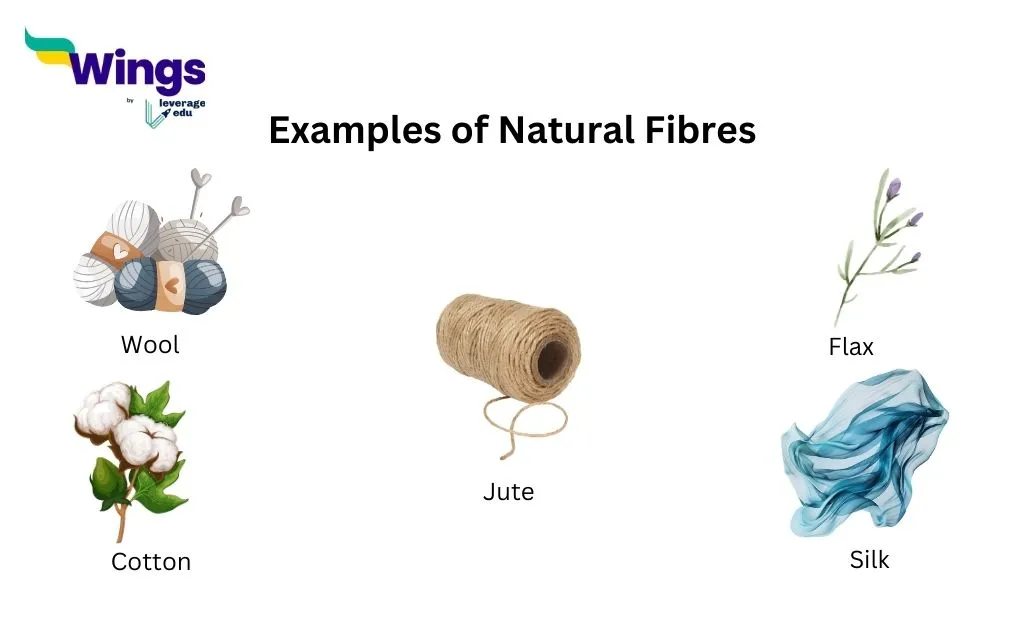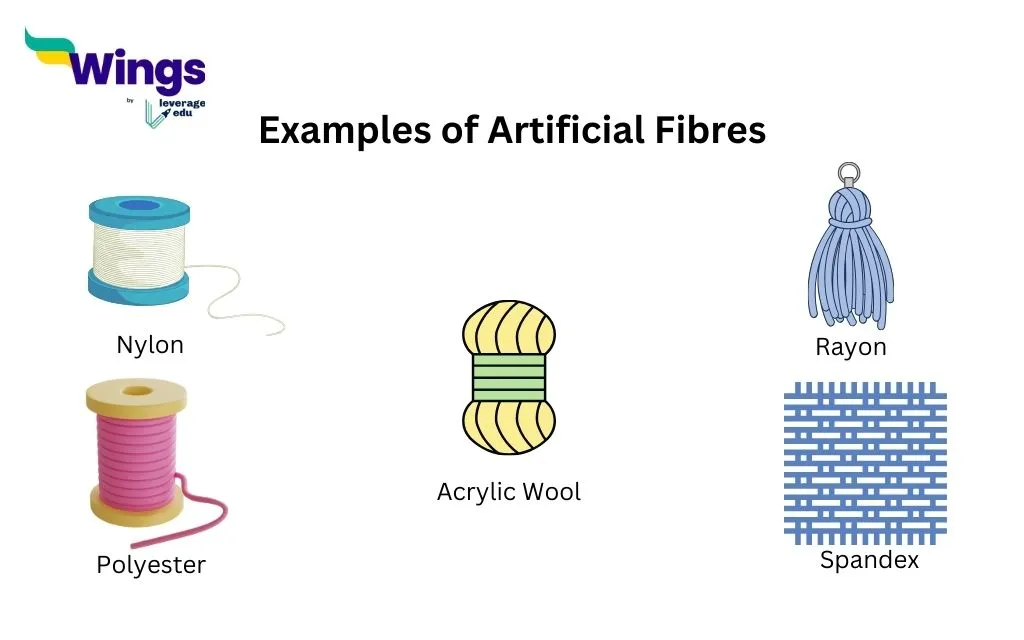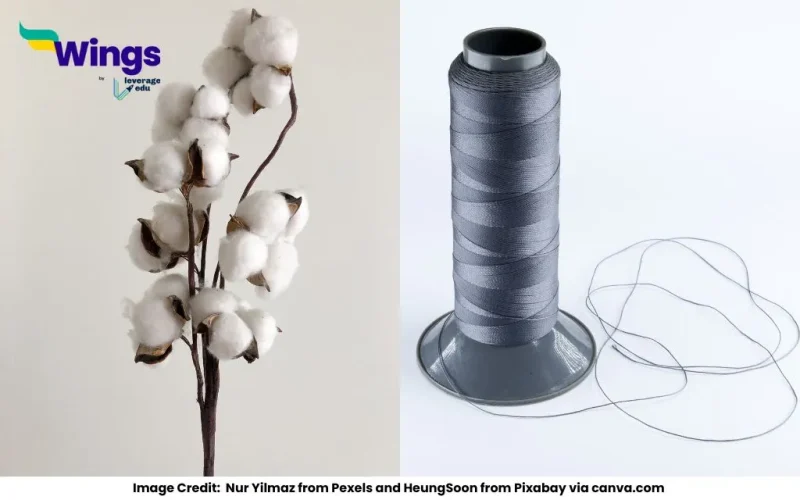5 examples of natural and artificial fibres: Natural fibres include cotton, wool, silk, jute, and flax, derived from plants and animals. Artificial fibres, like nylon, polyester, rayon, acrylic, and spandex, are man-made from chemical processes.
Complete Answer:
To learn more about 5 examples of natural and artificial fibres, let us know what fibres are and the definition of both types of fibres.
Fibres are the materials used to make clothes and other items like ropes and bags. They can be divided into two types: natural fibres and artificial fibres.
Natural Fibres: These are materials we get from plants and animals. They are soft, breathable, and eco-friendly.
Here are some examples of natural fibres and their sources:
| Natural Fibre Examples | Sources |
| Cotton | Grown on cotton plants |
| Wool | Taken from sheep |
| Silk | Made by silkworms |
| Jute | Derived from jute plants |
| Flax | Obtained from the stem of the flax plant (Linum usitatissimum) |

Artificial Fibres: These fibres are made by humans using chemicals. They are strong, long-lasting, and cheaper than natural ones.
Here are some examples of artificial fibres and their usage:
| Artificial Fibres | Usage |
| Nylon | Used in sportswear and stockings |
| Polyester | Used for making durable clothes and home items like curtains |
| Acrylic | Often used as a substitute for wool |
| Rayon | Made to look like silk, used for soft and shiny clothes |
| Spandex | Used in stretchy clothes like leggings |

Common Biology Questions:
 60,000+ students trusted us with their dreams. Take the first step today!
60,000+ students trusted us with their dreams. Take the first step today!


 One app for all your study abroad needs
One app for all your study abroad needs










